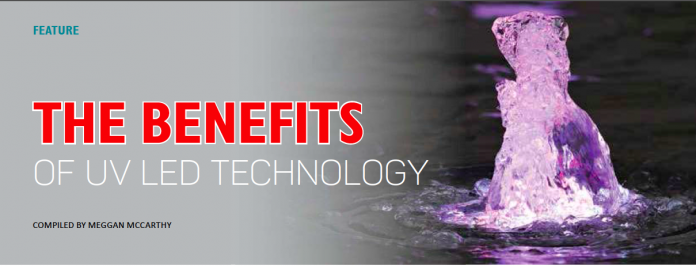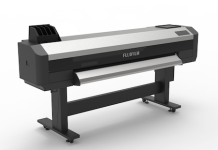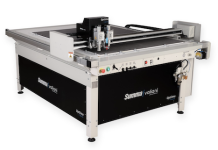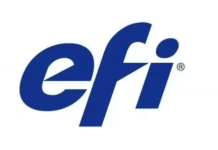UV LED technology allows for a broader range of print applications and substrates, such as heat-sensitive and delicate media, which allows printers to enter new markets. It also boasts operational and power savings and has environmental benefits. This article appears in the Sign Africa Journal.
According to David Fenn of Agfa Graphics, the return on investment with UV LED technology is substantially higher than conventional printing. ‘An LED printer would typically use less power than a UV printer but the best benefit of all is the lower running costs, as there are less consumables to consider (such as the UV lamp after every 1000 hours). LED’s have a lower energy consumption than the mercury bulb lamps. As UV LED lamps don’t contain mercury, there is no need for mercury disposal or any related costs.’
One of the biggest selling points for LED technology is its benefits for the environment. This includes that fact that the technology is ozone-free as well as the low power consumption. ‘The total power use for the UV-LED unit is about 80W, while the total emission of UV light energy from the unit is about 10W. By comparison, the total power consumption of the traditional metal-halide (MH) lamp is about 1.2KW/lamp,’ said Niki Long, Graphix Supply World. ‘Solely comparing the exposure system, the power consumption of the MH lamp is about 15 times greater than the UV-LED curing system. Furthermore, UV-LED’s can be switched on and off just for the printing cycle. In a nutshell, an MH lamp printer could consume three to ten times as much electricity as a UV-LED one.’
South African customers are also demanding more environmentally-friendly solutions. ‘Internationally, there is a pursuit of global sustainability and Africa is also strongly influenced by this. There is an increased demand from end-users to buy eco-conscious products,’ said Anja Kirton, Fujifilm South Africa. ‘Printers using eco-friendly inks and technology stand a better chance to secure more opportunities.’
Below are suppliers of LED printing technology:
AGFA GRAPHICS
WHICH LED ENABLED EQUIPMENT DO YOU OFFER?
Agfa’s entire range of Anapurna and Jeti printers now offers LED technology. The Anapurna range consists of hybrid, flatbed and roll to roll printers such as the Anapurna RTR 3200i LED dedicated roll to roll printer as well as the flatbed Anapurna H2540i LED dedicated flatbed printer.
The Anapurna hybrid range comprises the H2050i LED, H2500i LED and the H3200i LED. The Anapurna H2050i LED is a perfect fit for sign shops, digital printers, photo labs and mid-size graphic screen printers that want to combine board and roll-to-roll print jobs.
Ideal for sign shops, digital printers, photo labs and mid-size graphic printers, the H2500i has the following key features: 6-colour engine prints; printing at a width up to 2.5m and a thickness of 5cm; combines high quality with high productivity for outdoor and indoor, rigid and flexible wide format jobs; white ink function; air cooled LED lights save energy costs and time, and due to their minimal energy output the LED lights are ideal for heat-sensitive material.
The Anapurna H3200i LED 3.2m hybrid offers air-cooled LED UV curing and enables printing on a broader range of media. The system features a solid frame construction, user-friendly RTR media loading as well as quick system up-time, energy savings and overall reduced operational expenses.
—————————————-
FUJIFILM SOUTH AFRICA
WHAT ARE THE BENEFITS OF UV LED TECHNOLOGY?
Besides power savings and a wider range of substrates that can be printed on, prints are instantly cured and ready for shipping or further processing.
WHICH LED ENABLED EQUIPMENT DO YOU OFFER?
ACUITY LED 1600 II
This printer is built to produce exceptional print results in the most environmentally friendly way, with low energy LED UV curing technology. LED lamps consume far less energy than conventional UV and last up to ten times longer, so they have a positive impact on the total cost of ownership.
Users can produce a wide range of applications on roll and rigid materials, including display graphics, signage, decals, environmental graphics and package prototypes. LEDs produce very little heat, which means they can work with heat-sensitive media without deformation. High impact Acuity LED prints can be used with specialist finishing processes to create durable architectural graphics. Simultaneous two or three-layer printing with colour, white and clear inks provides the ability to produce high value creative prints that can expand service offerings.
ACUITY LED 3200R
The printer features an LED UV curing system (5000+ hours). LED UV uses a fraction of the energy of conventional curing systems and produces no heat. The process is solvent-free and produces little odour, so the Acuity LED 3200R can be used in most working environments without dedicated extraction. The machine produces consistent vibrant colours with a high degree of opacity for optimal results in day/night applications. Instant-curing UV inks enable multi-layer printing that reproduces high-quality designs with two-layer or three-layer printing.
With specially formulated Fujifilm Uvijet inks, users can print on a wide range of display materials. Even some specialist materials like polyester textiles and heat sensitive media print well due to no heat exposure during the LED UV curing process.
www.fujifilm.eu/eu/products/graphic-systems/wide-format-inkjet-printing
—————————————-
GRAPHIX SUPPLY WORLD
WHAT ARE THE BENEFITS OF UV LED TECHNOLOGY?
Miniaturisation: using UV-LED as the light source for curing means the overall size of the printer can be smaller than a printer using a MH lamp, as little cooling or ventilation is needed and the power supply unit can be smaller.
Long service life: a single chip with UV-LED lasts around 10,000-15,000 hours. Based on a 10,000-hour service life, it’ll need replacing after about five years (assuming 250 working days per year). But as the UV-LED’s are turned off in non-printing mode, the actual service life would be longer – most UV-LED’s wouldn’t need replacing during the service life of the printer.
Freely adjustable light intensity: with UV-LED, the light volume can be constantly controlled between zero and the maximum rated output, either by varying the current or selectively switching or pulsing the individual LEDs.
ARE SOUTH AFRICAN CUSTOMERS DEMANDING MORE ENVIRONMENTALLY-FRIENDLY SOLUTIONS, AND HOW DOES LED TECHNOLOGY MEET THESE REQUIREMENTS?
South African customers working in offices or confined spaces sometimes ask for odourless ink, or inks that do not require flash off over long periods of time, such as 24 hours. UV LED printing is now the new standard. Customers both in South Africa and in the rest of Africa have realised that UV LED is more cost effective and longer lasting, with the latest LED lamps only needing to be replaced every 10,000 hours.
WHICH LED ENABLED EQUIPMENT DO YOU OFFER?
EFI H1625 PLUS HYBRID
The EFI H1625 LED printer is for point-of-purchase, sign, banner and graphics printers, in-house shops, and commercial printers who require a printer capable of producing high quality images across the widest variety of substrates in widths up to 1.6m. The H1625 LED has 8-level variable drop grayscale heads for superior quality images, optimised ink usage, and LED UV cured inks including white ink for access to the greatest range of substrates.
Mimaki UCJV300-160: this is an all-round roll-to-roll printer/cutter with Mimaki’s innovative core technologies, which contribute to high image quality and stable production. Due to state-of-the-art UV LED printing technology, it offers a wide range of materials to print on, ranging from banners, self-adhesive PVC, PET film, soft signage, backlit media and more. Mimaki’s UV LED inks are nickle-free, have low VOCs, high colour density, scratch and chemical resistance, and are GREENGUARD GOLD certified.
The UJF-MkII Series of small format UV LED printers brings increased productivity and ease of use to on-demand, direct-to-object printing. Available in A3 or A2 format, these models build on Mimaki’s peerless heritage in UV printing technology and offer the ability to print directly on almost anything, ranging from phone covers and glass bottles to membrane switches and metal plates.
For professional sign and graphics companies that want performance and productivity, the JFX200 Series of flatbed UV LED printers offers two different maximum print areas (2.5 x 1.3m and 2.5 x 3.1m) and highly productive print speeds of up to 25 sqm/h.
—————————————–
SIGN-TRONIC
WHICH LED ENABLED EQUIPMENT DO YOU OFFER?
SWISSQPRINT IMPALA AND NYALA LED FLATBED PRINTERS
swissQprint LED printers offer reliable operation and hugely versatile applications scope. They consume little electricity, are virtually maintenance-free and consumables and downtimes from maintenance become almost obsolete. A series of mechanical improvements such as the reworked beam architecture has resulted in better stability and performance. The printers also feature a perfectly flat and uniform bed over their entire surface (3.2 x 2 metres with Nyala LED and 2.5 x 2 metres with Impala LED.) All those points combine to create ideal conditions for pinpoint-precise droplet placement and a homogeneous print image, while maintaining the usual high productivity. The Impala LED achieves 180 square metres per hour.
The Nyala LED is an imposing machine and surprisingly quiet when in operation and handles virtually any type of material. It turns out excellent results even at the top speed of 206 square metres per hour.
Impala LED and Nyala LED are true flatbed printers, expandable with options as customers grow or wish to increase their capacity. For example, the roll to roll option includes a new control element, ensuring even more precise measuring results and impeccable printing. This, combined with cool LED curing, makes for stress-free processing of heat-sensitive roll media like textiles, because the material warps less.
LED curing extends the general diversity of applications. Thin films, paper, board and delicate textiles, for example, join the repertoire of material that the digital printers can handle. Despite this, there is no need for expensive special LED ink: swissQprint UV inks cure both under mercury vapour lamps and under the new LED system. In the latter case, the output software automatically adjusts the UV output power to the material and the printing speed. This also helps users to achieve consistently optimal curing results.
Sign Africa Journal https://www.signafrica.com/magazine/















